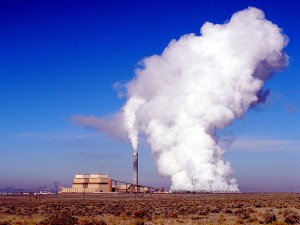City of Los Angeles Making Bumpy Transition to Clean Energy

How do power companies transition from dirty energy to renewable energy while keeping the lights as they do it? The Los Angeles Department of Water and Power (LADWP) is finding out, as they work towards a clean, renewable energy future. What they are doing makes an instructive case study for other utilities, many of whom are mandated to do the same.
The State of California says utilities must provide 33% renewable energy by 2020. This means that LADWP eventually needs to stop using coal. But, you say, coal plants aren’t allowed in California, so how can LADWP be using coal power? Well, it comes from hundreds of miles away from coal plants in Utah and Arizona. Cynics among us might opine that being squeaky clean and green within one’s state while getting substantial power by stinking up someone else’s state with coal pollution might present a bit of an ethical dilemma.
But that’s just how power has been generated for decades. Coal was (and still is) the king. It’s cheap and coal plants can produce prodigious amounts of power, about the equal of nuclear power plants. LA DWP is no different from other utilities in using cheap coal for power. But all that is changing. New Environmental Protection Agency mandates may forced the closure of coal plants or make their power more expensive due to pollution control upgrades. Plus, public opinion is shifting against coal.
LADWP gets 477 MW of coal power from the Navajo Generating Station in Page, Arizona and 803 megawatts (MW) of coal power from the Intermountain Power Project in Delta UT with options for 399 megawatts (MW) more. Together, these two power plants output 4.05 gigawatts (GW) and supply power to other states as well. LADWP also owns 10% of the Mojave Generating Facility in Laughlin, Nevada, which is being decommissioned. The Navajo Generating Station may be repurposed as a combined cycle natural gas plant (this is cleaner than coal but still fairly dirty.) The other two sites could be used for renewable energy or gas plants but plans are still vague.
All of this is made more complicated by long-term contracts that LADWP has with these power plants. They have a long term plan, the 2010 Integrated Resource Plan, which plans to replace coal with renewables. But they admit that funding will be a problem. As mentioned, LADWP is not alone here. Virtually all power companies are facing the same transitions.



